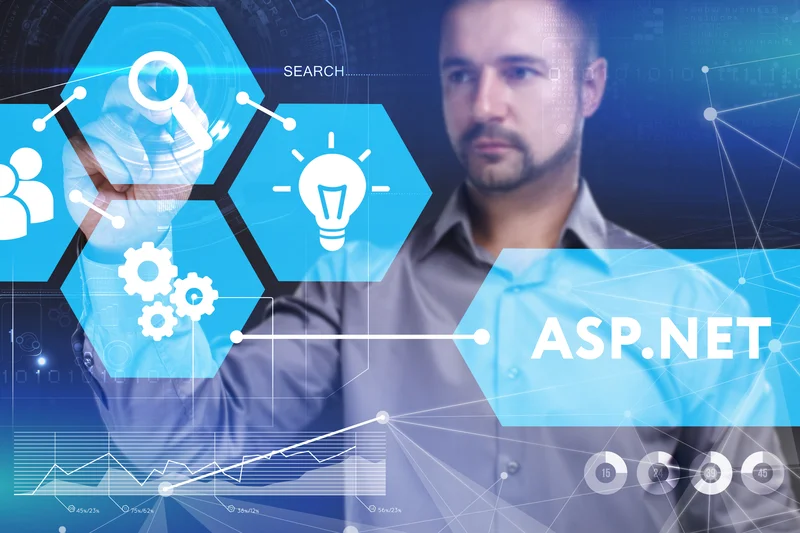What Is Sdlc? Software Program Growth Life Cycle Phases, Methodologies, And Processes Defined
The final but not least essential stage of the SDLC course of is the maintenance stage, where the software is already being utilized by end-users. This process involves detecting the possible bugs, defects, and errors, trying to find steps of system development life cycle vulnerabilities, and so forth., and can generally take up much more time in comparison with the app-building stage. Developers will typically use multiple tools, programming environments, and languages (C++, PHP, Python, and others), all of which is in a position to comply with the project specs and necessities outlined in the SRS document. It is often incorrectly equated with the actual development course of but is somewhat an intensive prototyping stage.

Write An Email To Your Advertising Team
In basic, SDLC is a closed loop in which each stage impacts the actions in subsequent ones and supplies clear info for future levels. By industry standards, a system is a mix of hardware, software program, and human assets that carry out the assigned tasks of collecting, processing, and displaying data.Within that context, the SDLC helps the system come to fruition. The Agile methodology can work in concord with the SDLC process by pairing phases with iteration frameworks.As a outcome, every stage could have roles of project members who will take an lively position in their tasks.
How Does Sdlc Tackle Security?
As Taylor articulated, your aim ought to be to suppose holistically about all of the activities of a project and the way to best manage every stage. The SDLC consists of a quantity of phases, with different specialists concerned in every. Many phases are interdisciplinary and include personnel from completely different specialties working collectively to move the project to the next section and towards completion. Over the years, varied SDLC methodologies have been developed, together with the original SDLC method, the Waterfall mannequin. Some contend that there are just 5 or 6 primary steps within the SDLC, for example. Mostly used for creating and delivering a variety of ideas, this mannequin perfectly suits the shoppers who don’t have a clear thought or vision of what their last product should look like.
Levels (phases) Of System Development Life Cycle
Every hardware or software program system goes through an iterative improvement course of with a number of steps, with each phase encompassing a certain set of actions and duties. The greatest growth mannequin for a given project is dependent upon components such as how briskly teams want to implement changes and what number of developers are working on a group. These are the approaches that may help you to ship a specific software program mannequin with distinctive characteristics and options. With that in thoughts, Intellectsoft’s greatest consultants have created a whole guide to the system growth life cycle.
System Evaluation And Requirements
They will take a look at the means to finest integrate the brand new software program into any present IT infrastructure the organization may have. Other steps that usually appear in the SDLC include project initiation, functional specifications, detailed specs, evaluation and end-of-life planning. The variety of steps involved in any given SDLC differ depending on the project size, timeline or complexity.
This phase contains multiple types of testing, such as unit testing, integration testing, system testing, and consumer acceptance testing. The System Development Life Cycle (SDLC) consists of a number of interconnected phases that present a structured framework for developing a system. These phases include Planning, Analysis, Design, Development, Testing, Implementation, and Maintenance.

During the evaluation part, a programmer develops written necessities and a formal vision doc by way of interviews with stakeholders. The improvement section requires a group of programmers, builders, and quality assurance engineers to work collectively to create a practical and reliable software program system. Big Bang fashions often work greatest with smaller system development initiatives the place you don’t need that many consultants on the job. Novice builders could hone their craft and earn useful expertise using this methodology. The Big Bang method additionally saves cash since it does not need lots of labor or provides.
Sometimes, programmers may use a mannequin that mixes parts of each the Agile and Waterfall approaches. Considered one of the most well-liked methodologies for SDLC, the Spiral mannequin is an exceptional answer for risk handling. When you hear the word prototype, if you’re like us, your thoughts wanders off to miniature airplanes or vehicles that we sometimes referred to as prototypes.Well, in the context of software growth, it’s not too far from the reality.

If you are using an established approach just like the waterfall mannequin, the final stage is upkeep. While upkeep has traditionally been considered as an finish in itself, the software program improvement sector is shifting in course of a more agile methodology. This model is kicked off with a small set of requirements which is then enhanced iteratively with evolving versions till you reach a ultimate product that’s able to be carried out and deployed. After all of the product requirements are approved, the team can lastly move to the event itself. At this part, the builders start writing the program code in accordance with the beforehand outlined wants. System directors configure the software surroundings, while front-end builders construct the user interface of the software together with the logic of its interaction with the server.
In the past, the most well-liked development model was the Waterfall model, which entailed pushing out adjustments to functions in giant, rare iterations. Today, Waterfall has largely given method to Agile software program development, which encourages teams to break application updates into small chunks of labor and handle them using brief sprints. Agile is commonly extra environment friendly for builders as a outcome of it lets them set small, manageable targets. It can also profit customers, who receive updates on a more regular foundation and wouldn’t have to contend with big utility overhauls that hit them all of sudden. Teams can implement the seven phases of the SDLC using a wide range of totally different software growth fashions – which means design strategies that guide implementation and manage every set of adjustments to the applying. The iterative and phased phases of an SDLC profit from the management of a devoted project manager.
In the Analysis part, the main target is on understanding and documenting the system’s requirements. This includes gathering enter from stakeholders, reviewing present processes, and figuring out the system’s needs. The knowledge collected varieties the basis for growing a system that addresses both user expectations and organizational challenges.
Learning about major methodologies of SDLC, along with their benefits and disadvantages, enables you to set up efficient system improvement processes that deliver the very best outcomes. Alternative development paradigms, such as speedy utility improvement (RAD), may be suitable for some tasks but usually carry limitations and should be thought of rigorously. There are various approaches to testing, and you will likely undertake a mixture of methods throughout this part. Behavior-driven growth, which uses testing outcomes based mostly on plain language to incorporate non-developers in the process, has turn into more and more in style. This section of the system development life cycle is often cut up into different sub-stages, particularly if a microservice or miniservice structure, in which development is damaged into separate modules, is chosen. This step involves decomposing the system into pieces, analyzing project objectives, breaking down what needs to be created, and interesting users to define necessities.
As quickly as the testing stage is over, it’s high time to integrate the information system into the environment, install it, and current the outcome to the tip user. “Let’s start using what we’ve got.” This step includes suggestions from end users. Depending on their suggestions, the builders need to make modifications and adjustments. Occasionally, as required, a product may be launched in a particular market prior to ultimate launch.
Today, most teams acknowledge that safety is an integral part of the software program development lifecycle. You can address safety in SDLC following DevSecOps practices and conducting safety assessments throughout the complete SDLC course of. Once growth teams have a clear understanding of what the appliance’s purpose is and which options are needed to serve that function, the starting stage is complete. Instead, groups set primary goals for utility features and description enterprise challenges the features tackle throughout this stage. Planning can also be a time to determine any unrealistic goals that must be set aside. For instance, contemplate an utility that can’t handle a enterprise need because of insufficient sources.
- Teams could discover that a certain characteristic performs suboptimally, for instance, and conclude that they want to overhaul the characteristic in the next application replace.
- This step involves monitoring the system, fixing issues, and making updates or enhancements to enhance its efficiency and performance.
- The main SDLC meaning is to build high-quality IT methods that meet or exceed buyer expectations within specified time and price constraints.
- This is the build phase during which you search not to reply questions but to supply outputs.
Such a team will possess sufficient expertise and information to launch a first-class software product that perfectly corresponds to all of your expectations, needs, and objectives. The testing part is essential as it verifies that the system functions as meant and meets its necessities, ensuring the quality of the ultimate product and minimizing potential issues. The first step in the SDLC includes identifying the aims, scope, and function of the project. This stage is crucial, as it units the muse for the complete development course of. The System Development Life Cycle is a systematic process used to develop and handle software program projects.
Transform Your Business With AI Software Development Solutions https://www.globalcloudteam.com/